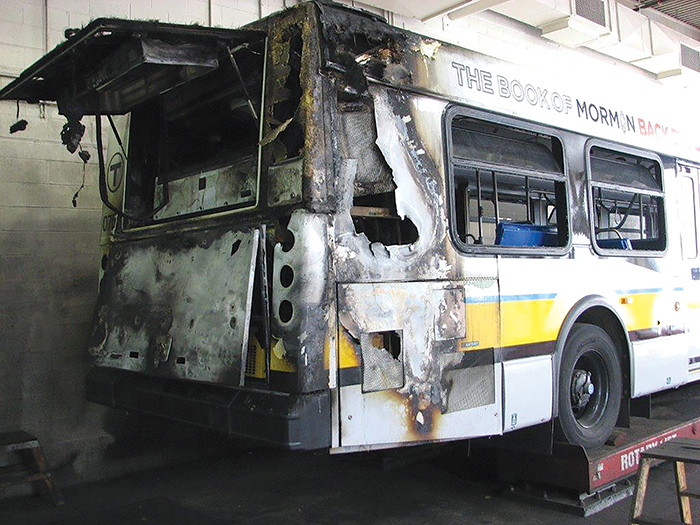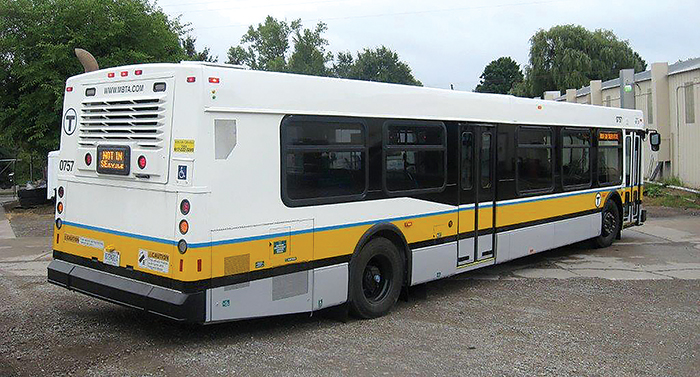
When it comes to evaluating the potential advantages and disadvantages of transit vehicle refurbishment versus new vehicle acquisition, there are many cost-benefit analyses to consider.
Often, larger agencies are involved in a combination of both the purchase of new vehicles and the remanufacturing of their legacy fleets. One of the benefits of introducing new vehicles into a fleet is the ability to incorporate new technology into the marketplace. That can include improvements in fuel consumption or alternate fuels.
On the other hand, the refurbishment, remanufacturing and redeployment of city transit vehicles can be a cost-effective alternative for achieving the reduction and overall load on the maintenance department, while simultaneously enhancing the customer experience. Most importantly, what we offer at Midwest Bus is a vehicle that is placed back into service with a greatly enhanced reliability. We have shown over the years that the remanufactured fleet that we provide to our customer is in some cases more effective in meeting the mean distance between failure criteria which many transit agencies strive to improve.
Over the years, we have benefited from being able to utilize the data that we accumulate on a daily, weekly, monthly, and annual basis. That data allows us to know (with a very high level of accuracy) how much labor and exact materials are going to be required to complete the goals that are set forth in the remanufacturing specifications which our customers present to us.

It is important to understand that the remanufacturing process involves taking a vehicle that has been in revenue service for an extended period of time and has reached a point where many of the systems that are operating on the vehicle, such as brakes, steering, suspension, and propulsion, are all in need of significant major remanufacturing. Propulsion is only one of the systems that is addressed in the remanufacturing process. Whether we are remanufacturing a vehicle that has diesel propulsion or CNG, the remanufacturing of those propulsion systems is just another element of the remanufacturing of the overall vehicle. It is one element which we incorporate into our overall scope of the remanufactured bus.
At what point in a bus’s life does it make sense to consider remanufacturing? This varies significantly depending on whether you are operating in a smaller, less strenuous duty cycle or in a major metropolitan system. On average, agencies considering the remanufactured option should begin thinking about what they would like to see in the way of enhancements with their fleet in about six years. Once a vehicle reaches its eight-year mark, agencies can opt for a midlife overhaul, or remanufacturing, and cycle that vehicle back into their fleet with a realistic expectation that they should get another eight to 10 years of service.
The overall maintenance requirements for remanufactured vehicles are typically very similar to what they were prior to the remanufacturing process, with the exception that, in a number of cases, we are able to actually reduce the maintenance load by putting in certain improved systems. These improved systems can include LED lighting and other components which reduce the number of tasks for which the maintenance department is responsible. Other upgrades include removing the hydraulic cooling systems and replacing with electric cooling systems, or replacing existing air conditioning systems with more self-diagnostic upgraded systems. These are all opportunities for the maintenance department to specify upgrades to the equipment that they are currently operating, with the goal of reducing the time that they need to spend in maintaining the bus to keep it reliable on the road.
Throughout 40 years of business, quality has always been the primary goal established for our organization. We feel that it is maintaining that quality that has allowed us to remain competitive and in business over the years. To that end, we place emphasis on how we achieve that quality. That might mean working with our vendor base, or using only high-quality products, or ensuring our personnel have the adequate tools and training needed in order to perform the remanufacturing in a professional, quality manner. Beyond that, we have employed long-term seasoned, experienced, quality assurance inspectors who review all of our vehicles before they released – seeing to it that they are of the highest quality and meet customer expectations.
Dan Morrill is president of Midwest Bus Corporation, an industry leader in the transportation support industry. Midwest Bus Corp. is one of the largest companies in the nation dedicated to the industry and the numerous authorities looking for assistance and solutions on bus repair, replacement parts, used bus sales, bus leasing, and field services to the transit industry.
Visit www.midwestbus.com for more information.
